When you want a beautiful lawn year after year, you already know that a good fertilizer is a must.
The thing is that not all fertilizers are the same, and while many people choose a popular brand such as Milorganite, they may be unsure of how and when to apply the fertilizer.
Determining when to apply Milorganite means looking at the type of grass you have and where you live, because both of these things affect when you’re going to apply the Milorganite and exactly how to do so.
In this article, we’ll help you decide how to use Milorganite so your grass always looks its best.
What Is Milorganite?
Milorganite is a brand of slow-release nitrogen fertilizer made by the Milwaukee Metropolitan Sewerage District, and it is one of the most popular types of fertilizers on the market today. After reading this article, it will be easy for you to understand why.
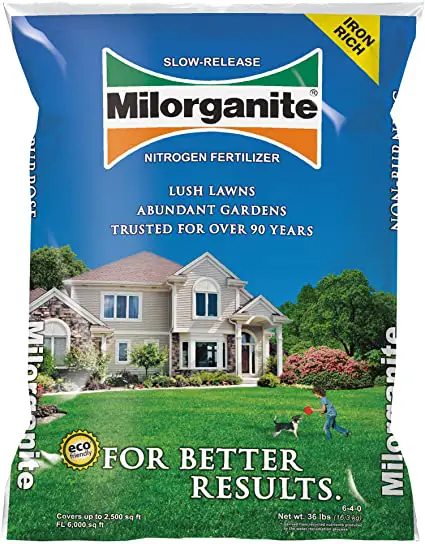
To make Milorganite, they start with wastewater. That’s right – “Wastewater”. But once the process is complete, they separate the clean water and release that back into Lake Michigan. They treat the wastewater with microbes, and then heat-dry those microbes so they are pathogen-free.
So, once the clean water is pushed back into Lake Michigan and the remaining microbes are heat-dried, the product is safe to use and makes the perfect organic nitrogen fertilizer. You won’t burn your grass when you use it, and the iron content means that your grass will soon become a gorgeous dark green color.
When the microbes are heat-dried, they are dried in temperatures of 900F to 1200F. This is why all of the pathogens are destroyed and the product is safe to use. Even the EPA has determined that Milorganite doesn’t cause any health problems for humans.
What you have to remember is that for Milorganite to work properly, you have to pay attention to the manufacturer’s instructions regarding how much to use and when to use it.
Fortunately, this is a lot easier than you might think!
Why Is Regular Fertilizing So Important?
Regular fertilizing of lawns is crucial because home lawns often have too few nutrients, and the right fertilizer puts those nutrients back in the soil. Different things can cause the nutrients to disappear, including the maintenance that is necessary to have a good-looking lawn in the first place.
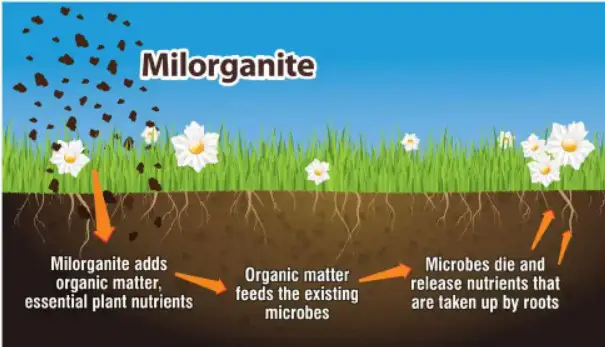
For instance, when you remove grass clippings, fallen leaves, and twigs from your lawn, you’re removing items that can return nutrients to the soil. You have to remove them for the lawn to look good, but this is also one of the reasons why most lawns are deficient in certain nutrients.
Lawn fertilizers replace lost nutrients and usually contain one or more of the following ingredients:
- Nitrogen: which helps make your lawn nice and green and helps it grow in thicker
- Phosphorus: which stimulates growth and helps the roots be healthy
- Potassium: which helps grass resist things such as bad weather, drought, and fungus
Milorganite fertilizer has just the right combination of these three ingredients, and you can check the bag to learn the amounts of each ingredient that are in the product. Often, Milorganite is 6% nitrogen, 4% phosphorus, and less than 1% potassium, but it can change with each batch.
A good fertilizer strengthens the roots of your grass, which allows them to absorb the water they need to grow and thrive. Fertilizers also firm up the soil and prevent pools of water from forming, which can result in bare patches on your lawn.
As you can see, a good high-quality lawn fertilizer is important if you want thick, lush grass in your lawn. But it isn’t important just to use a fertilizer regularly. It’s also important to know when and how to use this fertilizer, which is very easy once you learn what to do.
When to Apply Milorganite?
We mentioned earlier that knowing when and how to use Milorganite depends on two things: the type of grass you have and what your local climate is like.
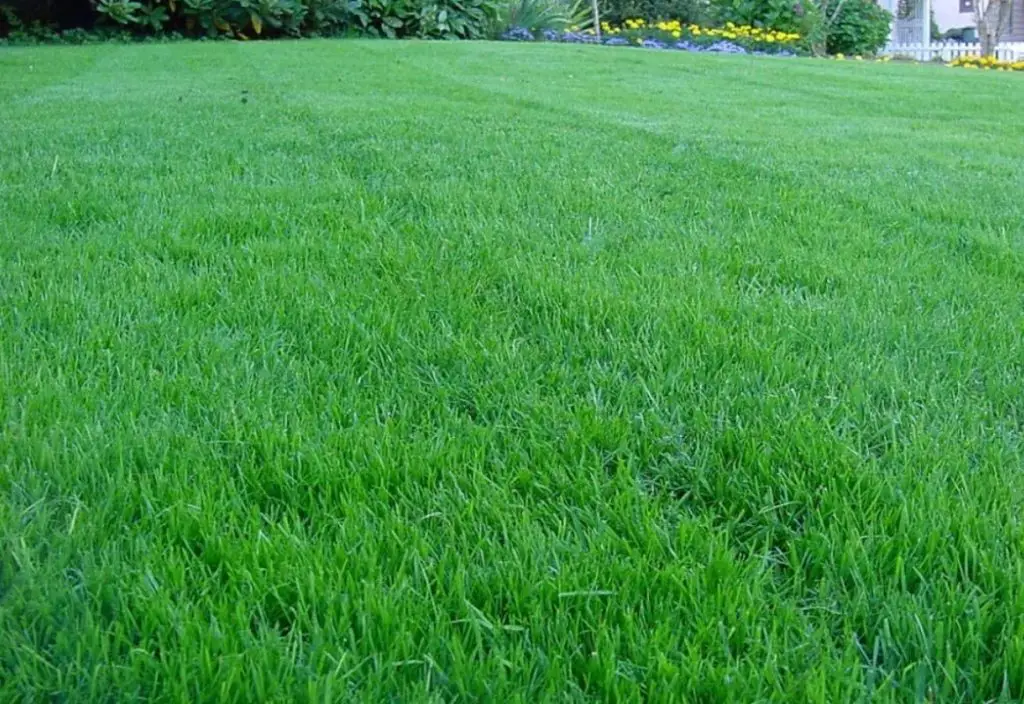
Grass types are usually broken down into cool-season (northern) varieties, which include Fescue, Kentucky bluegrass, and Perennial Ryegrass, and warm-season (southern) varieties, which include St. Augustine grass, Bermuda grass, and Zoysia grass. Both types require regular use of a fertilizer.
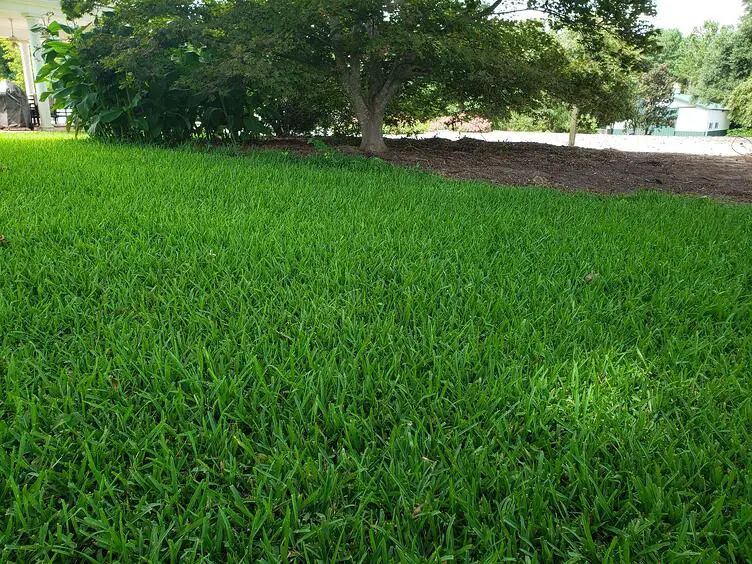
In fact, both cool-season and warm-season grass should be fertilized four times a year. The difference is in when the fertilizer should be applied.
Here is a good schedule for you to follow:
- Cool-season grasses: Memorial Day, July 4th, Labor Day, and Thanksgiving
- Warm-season grasses: Easter, Memorial Day, Labor Day, and early October
The exception with the warm-season grasses is with Centipede grass and Bahia grass. With these two types of grass, you should use a fertilizer only twice a year in the spring around Easter time and around Labor Day.
If you live in a cooler climate, it’s important to make that last fertilization before the first frost or snowfall occurs. If you live in a warmer climate, never fertilize in late fall because it’s best to do this one month before the first killing frost.
If you happen to live in an area that experiences both cool and warm climates, your best option is to identify the grass varieties you have so that you know exactly when to fertilize.
Tips and Reminders For Applying Milorganite Fertilizer To Your Grass
Here are a few other tips to keep in mind when fertilizing your lawn with Milorganite:
- If you’re tempted to use other fertilizers and amendments with Milorganite, be careful!. Read all of the labels on each of the products to make sure that they can all be used together. The one thing that you have to avoid is applying too many nutrients, which can cause a runoff of nutrients and even damage your lawn.
- Keep in mind that if you use a synthetic fertilizer along with Milorganite (which is organic), reading the labels is especially important because synthetic fertilizers can burn your lawn.
- Don’t use more than the recommended dosage of Milorganite because it is designed to be used a certain way and in the proper amounts. If you accidentally put too much Milorganite on your lawn, just scoop up as much of the extra as you can with your hands or a rake and put it back in the bag.
- As a general rule, you’ll use one bag of Milorganite for every 2500 sq. ft of land you have. And when we say “land,” we mean just that. You don’t have to count the carport, garage, etc. when calculating or estimating how much land that you need fertilized.
Each bag of Milorganite is around 32 pounds, and you can plan to use around 18 bags if you have a full acre of land. Again, it’s important to abide by the instructions on the bag and be familiar with them.
What About New Lawns?
If you have a new lawn, you’ll need to deviate a bit from the rules mentioned earlier. The best thing to do is wait until your seedlings have germinated and the lawn has been mowed a total of three times. After this happens, apply two bags (not one) of Milorganite for every 2500 sq. ft of grass.
While this amount is double what you use for lawns that are already established, it is needed because young grass needs more nutrients than established lawns. In fact, for the first full year, you should use two bags (64 pounds) for every 2500 sq. ft of grass that you have for brand-new lawns.
Once the grass is a year old, you can start using the standard amount of Milorganite, which is one bag for every 2500 sq. ft of grass. But it’s crucial that the new lawn get double this amount for a full year in order for the grass to grow thick and lush.
The Popularity of Milorganite
Milorganite is an organic fertilizer that releases slowly and works over a period of time to produce excellent results. To date, the company manufactures roughly 2.4 million bags of Milorganite every year. The EPA has approved the product for growing food crops intended for human consumption.
Because the product is tested regularly for both waterborne pathogens and heavy metals, it is deemed safe and can be used without restrictions when applied to lawns. While it is not certified for use on USDA organic farms, it is made from 85% renewable materials.
Final Thoughts
Milorganite fertilizer is truly a miracle worker for people whose lawns look a little less than perfect. It is safe and can be used on all types of grasses and plants, and all you have to do for a great-looking lawn is use the fertilizer four times a year.
If you use Milorganite with other fertilizers, make sure that you read the labels on the other products so you don’t give your lawn too much fertilizer, which can damage the grass.
Milorganite is easy to use and not that expensive, so you can enjoy a beautiful, thick, green lawn all year long if you use the product faithfully and regularly.
To get started, just determine what type of grass is planted and follow the rules specified for that particular type.
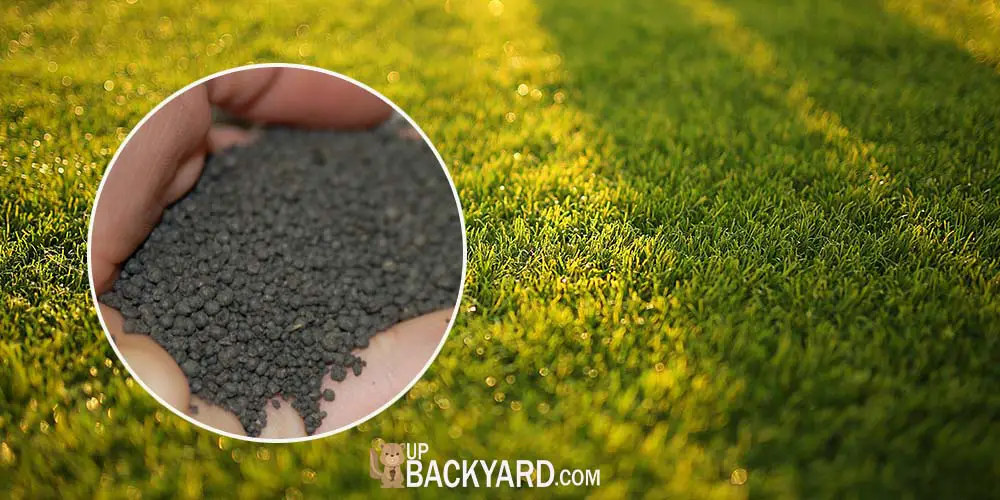
Can milorganite be used in a vegetable garden and how much per square foot?
Hi John, Milorganite is a safe, slow-release fertilizer, you can use on all your vegetables and flowers as directed. Before planting, rototill or hoe to work into the soil 4.5 lbs (4 ½ cups or ½ cup per plant) of Milorganite per 50 sq ft of garden.
How much do l use for a small area of 450 sqft area of zyon zoysia grass in San Antonio Tx. And how do l apply it? Where can l buy this product?
Our Wmart handles it as does our Agway
Coming from waste water is there industrial waste that contains heavy metals a concern it may contaminate the ground water?